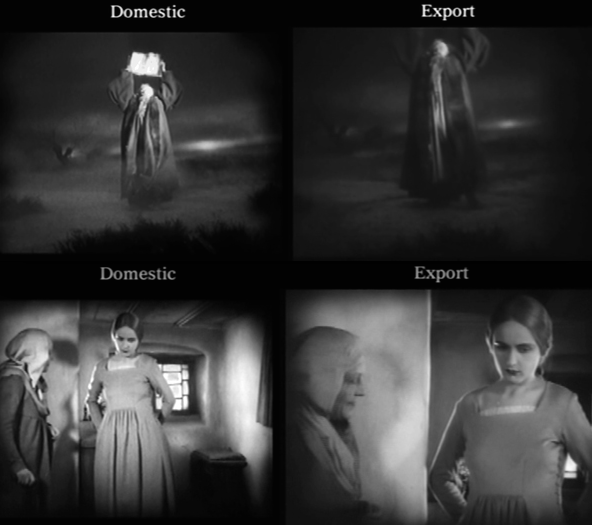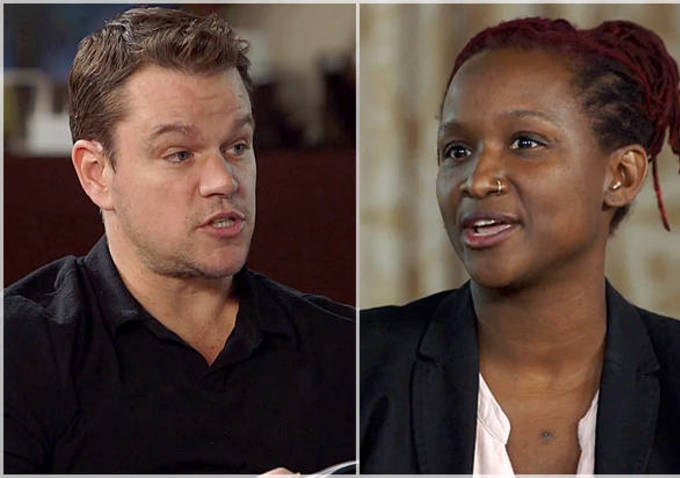
1.
"The Theme That Ties All of Guillermo del Toro's Movies Together": A wonderful essay from Tasha Robinson at io9.
“Early in Guillermo del Toro’s ‘Crimson Peak,’ protagonist Edith Cushing (Mia Wasikowska) eagerly gives a story she’s written to a publisher. But he sends her away, with the condescending instruction that ladies should really be writing romance stories, not ghost stories. She balks at the critique—not just because he’s a sexist ass, but because he’s misinterpreted her work. It isn’t a ghost story, she says, it’s a story with a ghost in it. ‘The ghost is a metaphor for the past,’ she grumbles under her breath, knowing he isn’t really listening. It’s the most self-aware moment in a largely self-aware movie. Del Toro has said ‘Crimson Peak’ was inspired by Hammer horror films and gothic romances, with visual touches from Italian giallo films and Victorian paintings. Like Quentin Tarantino, del Toro is a synthesist with a passionate, wide-ranging devotion to culture, and a tendency to wear his influences openly. Those influences have never been more nakedly evident than in ‘Crimson Peak,’ a lush, visually overripe love letter to the stylized cinema, literature, and art del Toro has loved in the past. But the ghost-as-metaphor is del Toro’s own unique, heavily underlined author’s signature. With that line, he and co-writer Matthew Robbins spell out ‘Crimson Peak’’s central theme. And the burdensome past isn’t specific to this one movie. It runs through all of del Toro’s writer-director projects: the idea that people are haunted by their histories, and have to exorcise their memories to live complete lives.”

"Silent frame rates and DCP: A guest essay by Nicola Mazzanti": Published at David Bordwell's essential Observations on Film Art.
“Unlike video files but like a strip of film, a DCP consists of a bunch of individual frames that play nicely one after the other. The number of frames that are played back per second is defined by a simple line of code in an XML file. From the point of view of the technology in the server and of the DCP format, there is no reason why we cannot play a film at any rate we like, say, 17fps. (Granted, we can’t really run it at 100fps, because of bandwidth, but you see my point.) This is not the whole story. First of all, there is a need for a highly standardized system or we would have the problem of a DCP playing well in one theater and at the wrong speed in the next. Then there are other issues, like the frequency of the projector or the link between the server and the projector. I will not bore you with the details. In sum, technical problems make it impossible to build what I had proposed in the first place: a hand-cranked digital projector. (I was serious.) Yet all these technical problems could be solved, if we took a rather pragmatic approach. (Here, ‘pragmatic’ is the PC term for ‘compromise.’) That’s what we archivists did, a few years ago. At the time of publication, the Digital Cinema Initiative specs described something that did not really exist yet. The technology was only almost there. In the hurry to produce a standard that could work, it was perfectly sensible to start with only two frame rates: 24 and 48 (for 3D). Some time later though, the issue of expanding the frame rates options came back with a vengeance. The strongest push was coming from European broadcasters who wanted to sneak their boring stuff to the cinema screens and thus called loudly for a 25fps frame rate. Then some filmmakers like Peter Jackson and James Cameron fell in love with the idea of higher rates, like 30fps and 60 for 3D (regardless of how this would balloon production budgets).”

"Another Announcement: Gena Rowlands' Lifetime Achievement Oscar": Hugely exciting news from our own Sheila O'Malley at The Sheila Variations.
“On November 14, the Oscars hold their separate ceremony for the Lifetime Achievement Award people (this year it’s Gena Rowlands, Spike Lee, and Debbie Reynolds), as well as the Humanitarian Award. Gena Rowlands is my favorite living actress and it was such a tremendous honor – so tremendous it made me feel quiet and grateful – humbled – when Criterion asked me to write a video-essay about Rowlands’ acting for their release of ‘Love Streams.’ Rowlands’ work is all wrapped up in my own life, as is true of many great performers and artists – but there’s something unique about Gena Rowlands/John Cassavetes fanatics. Their collaboration means something to people BEYOND the films they made together. Their collaboration seems to give hope that true and pure and personal art is possible in America, that ‘it’ can be done and on a GRAND scale, that you can make the kind of art you want to make. Capitalism exists, the market exists, but Cassavetes films can exist too. Rowlands and Cassavetes have inspired three generations now, maybe even four. John Cassavetes died in 1989. Way too young. He and Rowlands had been married since 1954. They have three children (all of whom have become film-makers and artists as well: Nick, Zoe, and Alexandra Cassavetes). Rowlands, heavily associated with her husband’s work, had had a great career before him (she became a star very young appearing on Broadway with Edward G. Robinson in ‘Middle of the Night’) and she has had a great career after him. She is 85 years old, and still working. Not only that, but she’s still a headliner. Olympia Dukakis came and spoke at my school years ago. She was talking about being an elderly actress in Hollywood and I thought it was so funny: even as a 70 year old, the competition never stops. Dukakis said, with no bitterness, only common-sense as well as a respect for the competition: ‘Listen, every script that comes to me has been offered to Gena Rowlands first. I get the script and her fingerprints are all over it. Any role I get it’s because she’s already turned it down.’ That’s indicative of Rowlands’ towering stature.”

"The Most Exciting Part of the New 'Star Wars: The Force Awakens' Trailer? The New Music.": Slate's Ali Arikan rejoices over the anticipated film's John Williams score.
“In general, movie trailers tend to feature older compositions or temp tracks rather than new works from the advertised film. John Williams had previously written a specific score for ‘Hook’’s first teaser, and his ‘Harry Potter’ theme initially appeared in the series’ announcement trailer, but otherwise his work—especially for the ‘Star Wars’ films—premiered with the films themselves. So it was a particularly welcome surprise, amid all the other surprises of the ‘Star Wars: The Force Awakens’ trailer premiere Monday night, to hear brand-new music from John Williams. In a 2009 conversation Matt Zoller Seitz and I had about the music of the ‘Star Wars’ prequels, Seitz equated Williams to the benshi of the Japanese cinema’s silent era, who would stand in front of the cinema and interpret the film. Williams has always woven deeper meaning into his compositions, and that tendency was pronounced in his scores for the prequels—so it makes sense that the musical cues in the trailer, whether this is music composed for the film itself or only for the trailer, can also offer up some clues. The trailer opens with a new theme. First, we hear the stripped-down version on the piano, played meticulously as Daisy Ridley’s character Rey makes her way through the insides of a fallen Star Destroyer on Jakku. It’s an innocent theme, hinting at longing and a desire to get away, underscored when we see Rey watch a starship leave her barren, desert planet and the piano is complemented by the harp. We hear a repeat of this theme as we’re introduced to John Boyega’s turncoat stormtrooper, Finn, protesting that he has nothing to fight for. If you listen closely, you can also hear some of the whispered words in Sanskrit from ‘Duel of the Fates,’ the key musical motif from ‘The Phantom Menace.’”

"The Unsinkable Effie Brown Makes HBO's 'Project Greenlight' a Must-See: 'I'm Not His Favorite Person'": A terrific piece from Indiewire's Anne Thompson.
“When producer Effie T. Brown (‘Dear White People’) signed up to produce the indie movie being shot during ‘Project Greenlight’ Season 4, she had no idea she'd be front and center on the show. She had produced four films for HBO, including ‘Real Women Have Curves’ and ‘Rocket Science,’ so HBO exec Ginny Nugent knew her well, and told her that while she might be on camera, the focus would be on the director of the movie, Jason Mann. ‘It became apparent that the entire series was about me and Jason,’ she told me in a phone interview. ‘If I would have known that I would never have done this for free!’ Brown was paid the SAG day rate for the first day of shooting the series along with her producer's fee plus two points on the back end for the movie: ‘It was a s—ty deal. I only got paid to do the film.’ That's Brown. She tells it like it is. As this compelling season of ‘Project Greenlight’ unfolds, Brown is the star of the show. Now she's back in LA, the show is shot, the movie premiered in mid-July at L.A.'s Ace Hotel Theatre, and will show in theaters and screen on HBO right after the November 1 series finale. Brown first met with Adaptive Studios partners Marc Joubert and Perrin Childs, who brought ‘Project Greenlight’ back to life; Joubert knew Damon and Affleck from working on the previous iteration of the show when it was at Miramax. Brown asked Joubert if they had intentionally chosen the initial script ‘Not Such a Pretty Woman,’ which includes black prostitutes, to be controversial. Nope. ‘I’m going to speak freely,’ she decided, figuring she had already lost them.”

Oscar-winning composer Howard Shore chats with Indie Outlook about some of his most beloved film scores.
BRIDGE OF SPIES LIKE US - Mashup trailer of BRIDGE OF SPIES and SPIES LIKE US from Nelson Carvajal on Vimeo.
The endlessly inventive Nelson Carvajal presents his latest mash-up trailer, "Bridge of Spies Like Us," suggesting a semi-sequel to "1941."
Matt Fagerholm is an Assistant Editor at RogerEbert.com and is a member of the Chicago Film Critics Association.





